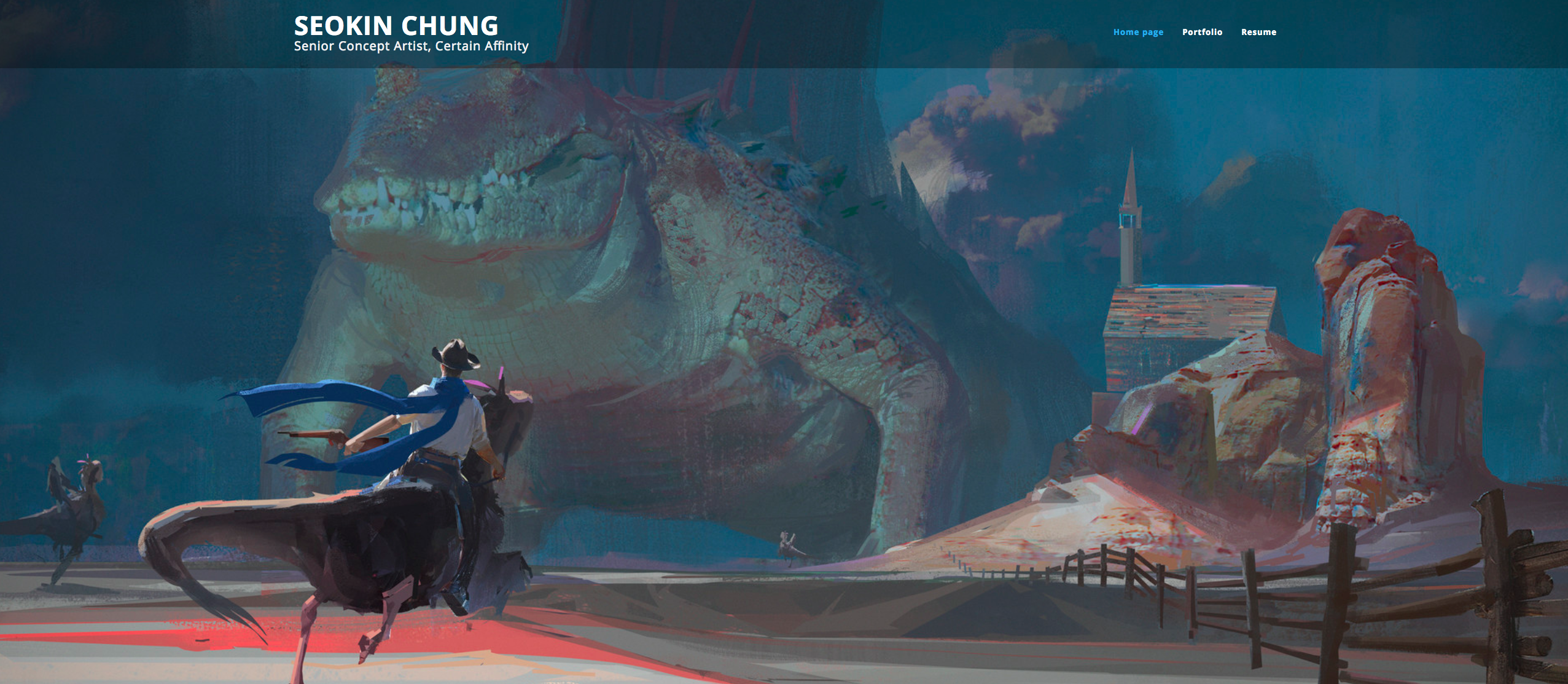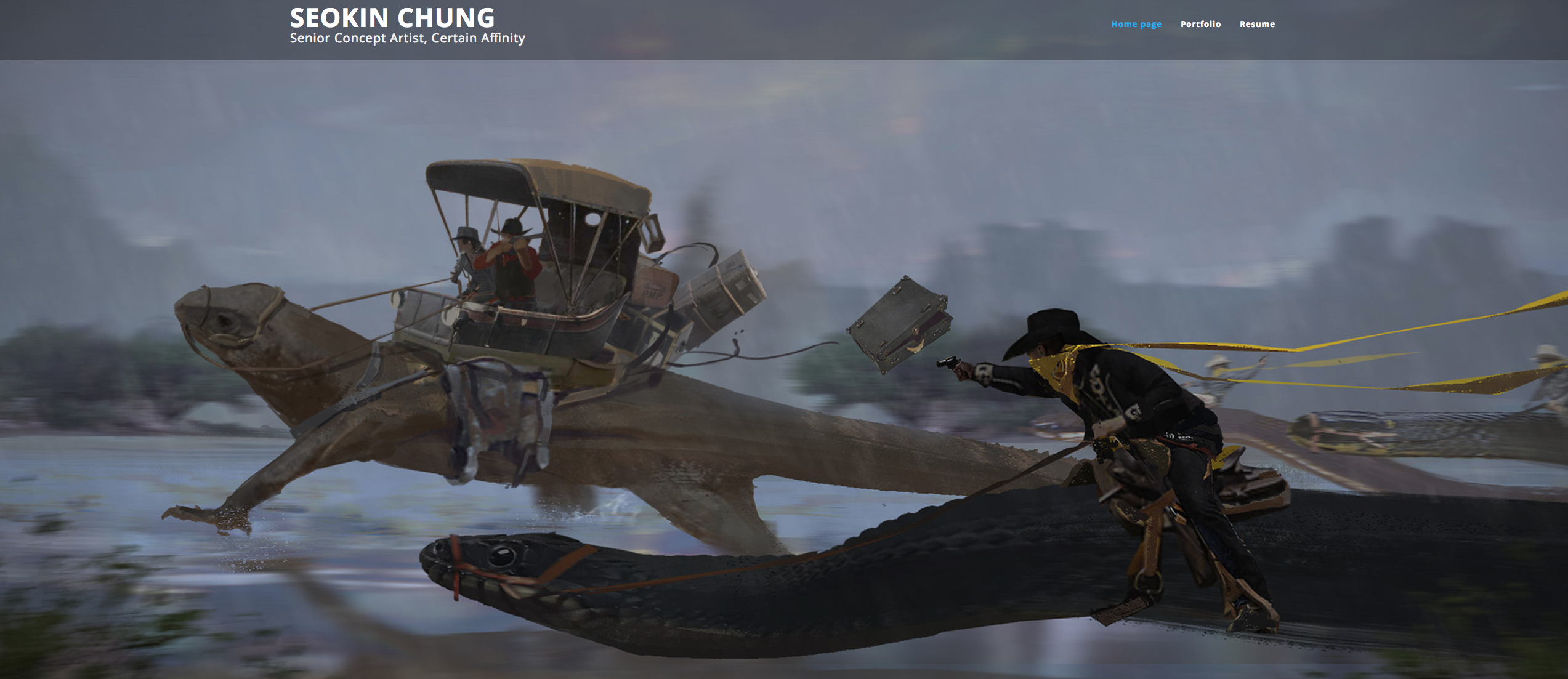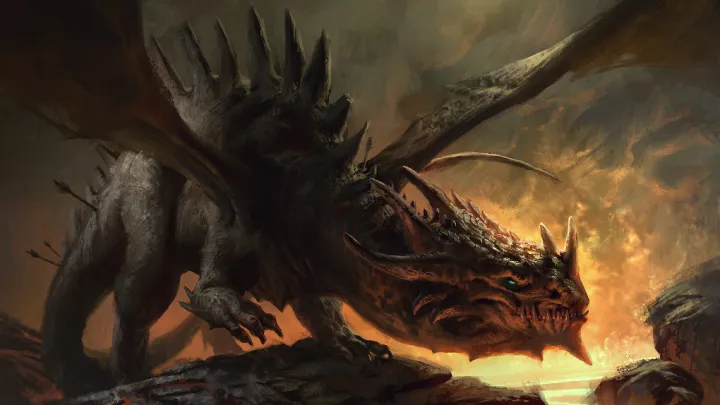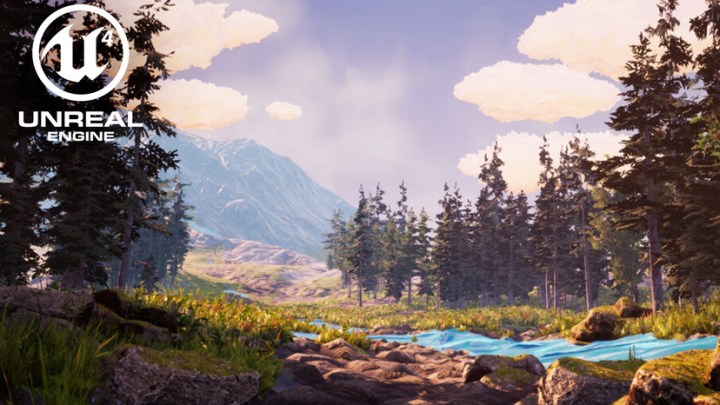Featured Pro Portfolio: Seokin Chung
Seokin Chung is a Senior Concept Artist at Certain Affinity currently based in Texas, originally from South Korea. The ArtStation Pro Bombastic theme is great for his keyframe style concept artwork as the the single large image immerses you straight in the scene.
See Seokin’s ArtStation-powered portfolio website.
In this interview, he discusses the importance of taking the time to learn and try new things, figuring out what you like and portfolios that tell a story.
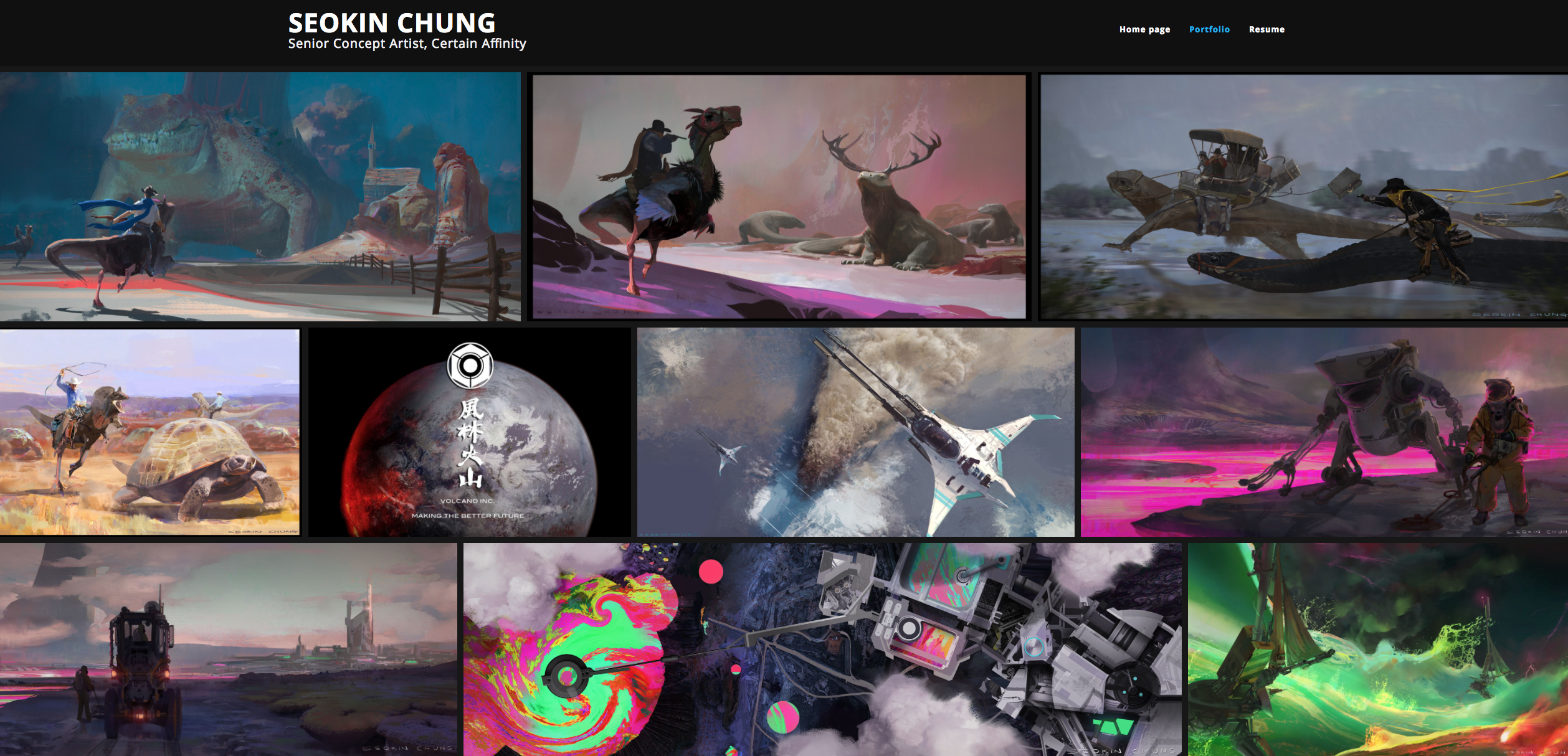 What experiences/training brought you to where you are today?
What experiences/training brought you to where you are today?
I studied Entertainment Design at Art Center College of Design. I learned most of my digital art skills and design process knowledge there. But before I got into the program, I had go through many missteps and detours along the way.
I grew up in South Korea and really didn’t start learning art until I was in my last year of high school. I really wasn’t sure about becoming an artist but some how I wanted to learn how to draw and paint, so I tried to get into art school. In order to get into art college in South Korea, I had to take a life painting test in watercolor and to pass the test I had to study watercolor for 2 years. I had to paint all kinds of boring things like apples, bottles, bricks, flowers, sculpture busts…. and after that entrance test, I never painted anything in watercolor again. After I got into college, I studied traditional cell animation because it was the only program I could find in the art college somewhat close to what I wanted to learn. Learning how to animate something was an amazing thing, but it was not what I enjoyed the most, and I was not good at it. After finishing the curriculum, I never really animated anything. So I spent a pretty long time learning things I didn’t really enjoy, and was desperately looking for something else. So I applied and got accepted to Art Center College of Design. in Pasadena, moved to the United States and started learning how to do concept art. Luckily, I really enjoyed what I was learning there.
Did I waste my time? Maybe. I was 27 when I started learning concept art. It was never late, but probably not the earliest age to start learning something new. Was everything I learned before studying concept art useless to me? I think not. I didn’t really enjoy what I was learning at the time, but that experience has been my foundation because it gave me a very basic form of craftsmanship and the ability to learn something.
What do you think separates a strong portfolio from an average one?
I love portfolios with stories. Of course a strong portfolio has to showcase amazing artistic skills, the ability to use various types of software, and knowledge of design process but all those skills and knowledge are there to convey some kind of story. It doesn’t really have to be some sort “keyframe” or sequence of images. Sometimes I find a very nice story from a 3/4 angle view of simple props. I think good artists can put lots of thought and story into very simple things and be able to convey and execute it in many different ways.
Tell us about one of your most exciting projects.
My favorite personal project I did is a Volcano planet project I did for my graduation project at Art Center. It was a very fun project that allowed me to test how I can apply what I learned from school in a concept design project and it gave me a major portion of my portfolio, which eventually led me to my first full-time job. It started from one airship design I did for a vehicle design class and I kept adding more and more pieces of the puzzle to build a visual design of the world surrounding it. That project was so exciting because the entire setup of the project was so loose and I had the perfect excuse to put in whatever I liked. Anything could fit into the world. Industrial buildings, harsh natural environments, bots, vehicles… everything. And, it was the project that made me realize my love for colorful lighting. It made me study how light can affect the atmosphere and the mood of the image.
What advice do you have for aspiring artists?
Spend time finding what you love to do. Develop foundational art skills and learn software you need along the way. Don’t get nervous about not getting better quickly. Learning art takes time. There is no such thing as a short cut. Any type of skill takes time and effort to learn. As long as you like what you are learning, you will find the way to get better at it. Don’t get stuck on a very specific type of skill set or art form. There are so many different types of art and skills, and you don’t know you will like or not until you actually try it. If something looks fun and interesting, don’t hesitate to try it. And lastly, don’t be afraid of quitting something if you don’t like it. Sometimes just quitting something opens up a lot more opportunity for something more exciting, and something you might enjoy learning more. See more of Seokin’s work on his portfolio website. To learn more about ArtStation Pro websites, click here.
See more of Seokin’s work on his portfolio website. To learn more about ArtStation Pro websites, click here.
